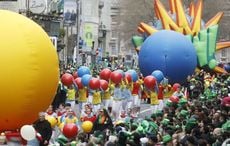Young orphans who were sent from Northern Ireland to institutions in Australia were “painted black” for the apparent entertainment of their fellow ship passengers, a victim has revealed in testimony.
“Our faces were painted black to make us look like [Indigenous Australians],” he said, as part of the on-board attractions for paying passengers on the same ship.
Northern Ireland is in the midst of a historical inquiry into widespread physical and sexual abuse of children in both state and church run homes, reported to be the largest public investigation into institutional abuse.
The most recent sessions of the inquiry have centered on 130 children who were shipped to Australia between 1946 and 1956.
The inquiry, chaired by former judge Sir Anthony Hart, heard testimony on Tuesday at Banbridge Court House in County Down from a man, now in his 70s, who in 1953 was sent to Australia from the Catholic-run Termonbacca home in Co. Derry.
The man requested to remain anonymous before giving his testimony. According to The Guardian, tears streamed down his face as he recalled the abuse he and other orphans endured during the journey to Australia, including being painted black.
He said that as a result of the abuse he experienced in Northern Ireland and then Australia, "I had no idea how to parent my children, or even how to cuddle and love them. I really don't know what love is."
Another victim, a veteran of the Australian Air Force, said that the abuse and conditions at the Bindoon home in Australia were even worse than what he experienced in Termonbacca.
"After Bindoon, Termonbacca turned out to be a holiday camp,” he said.
To date, 66 people who were shipped off to Australia during this dark decade in Northern Ireland’s history have given evidence and testimony.
The end-point remains uncertain, as the Northern Irish inquiry has no legal authority in Australia, but Hart has said that all evidence will be brought to the attention of a similar inquiry currently taking place in Australia.
Click here to view footage of the Bindoon Boy's Town in 1944.
* Originally published in September 2014.




Comments